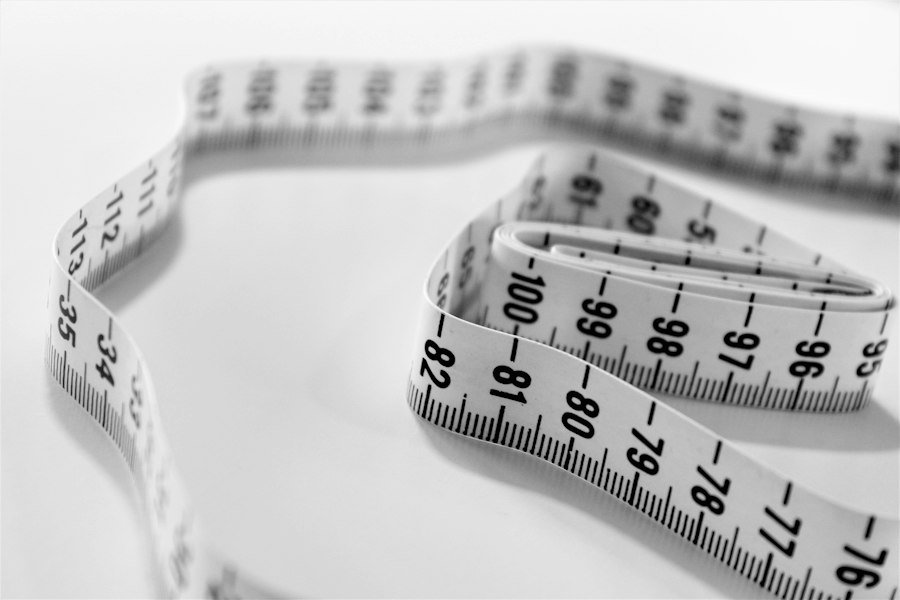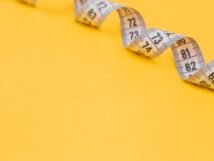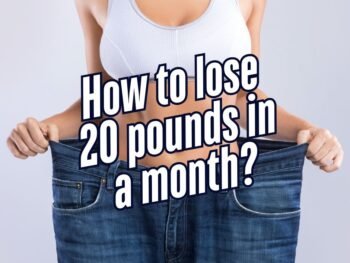When it comes to losing belly fat, diet plays a crucial role. While exercise is important for overall health and fitness, it is often said that abs are made in the kitchen. This means that what you eat has a significant impact on your ability to reduce belly fat. In this article, we will explore the various ways in which diet can help in belly fat loss. We will discuss the benefits of eating salad, the nutritional value of salad, the role of fiber, portion control, salad dressings, the best types of salad, the importance of variety, combining salad with other foods, and the role of exercise in conjunction with a salad-based diet.
Key Takeaways
- Diet plays a crucial role in belly fat loss.
- Eating salad can help reduce belly fat and aid in weight loss.
- Salads are packed with essential nutrients that promote weight loss.
- Fiber in salads helps reduce belly fat and aids in digestion.
- Portion control is important when eating salad for weight loss.
Understanding the Role of Diet in Belly Fat Loss
Diet plays a crucial role in belly fat loss because it directly affects your calorie intake. When you consume more calories than your body needs, it stores the excess as fat, often in the abdominal area. On the other hand, when you consume fewer calories than your body needs, it starts to burn stored fat for energy, leading to weight loss and a reduction in belly fat.
A balanced diet is important for weight loss because it provides your body with the necessary nutrients while keeping your calorie intake in check. A balanced diet includes a variety of foods from different food groups, such as fruits, vegetables, whole grains, lean proteins, and healthy fats. By eating a balanced diet, you ensure that your body gets all the essential nutrients it needs to function properly while also promoting weight loss.
The Benefits of Eating Salad for Belly Fat Reduction
Salad is often recommended for belly fat reduction because it is low in calories and nutrient-dense. This means that you can eat a large volume of salad without consuming too many calories. The high water content in salad also helps to keep you hydrated and feeling full, which can prevent overeating.
Additionally, salad is rich in vitamins and minerals, which are essential for overall health and wellbeing. By including a variety of vegetables in your salad, you can ensure that you are getting a wide range of nutrients that support weight loss and reduce belly fat.
The Nutritional Value of Salad for Weight Loss
Salad is packed with essential vitamins and minerals that support weight loss. For example, leafy greens like spinach and kale are rich in vitamins A, C, and K, as well as folate and iron. These nutrients are important for maintaining a healthy metabolism and promoting fat burning.
Other vegetables commonly found in salads, such as tomatoes, cucumbers, and bell peppers, are rich in antioxidants and fiber. Antioxidants help to reduce inflammation in the body, which can contribute to weight gain and belly fat accumulation. Fiber is important for digestion and helps to keep you feeling full for longer periods of time, reducing the likelihood of overeating.
The Role of Fiber in Salad for Belly Fat Reduction
Fiber plays a crucial role in weight loss because it adds bulk to your diet without adding calories. This means that you can eat a larger volume of food while consuming fewer calories. Fiber also slows down the digestion process, which helps to regulate blood sugar levels and prevent spikes in insulin, a hormone that promotes fat storage.
Salads are naturally high in fiber because they are made up of mostly vegetables. By including a variety of vegetables in your salad, you can increase your fiber intake and promote weight loss. Some high-fiber vegetables to include in your salad are broccoli, Brussels sprouts, and carrots.
The Importance of Portion Control When Eating Salad for Weight Loss

While salad is a healthy choice for weight loss, portion control is still important. Even though salads are low in calories, it is still possible to consume too many calories if you eat large portions or add high-calorie toppings like cheese or creamy dressings.
To practice portion control when eating salad, start by using a smaller plate or bowl. This will help you visually gauge the appropriate portion size. Additionally, be mindful of the toppings and dressings you add to your salad. Opt for lighter options like vinaigrettes or lemon juice instead of creamy dressings, and use them sparingly.
The Role of Salad Dressings in Belly Fat Reduction
Salad dressings can significantly impact the calorie content of your salad. While some dressings can be high in calories and unhealthy fats, there are healthier options available that can still add flavor without adding excessive calories.
Healthy salad dressing options include olive oil and vinegar-based dressings, such as balsamic vinaigrette or apple cider vinegar. These dressings are lower in calories and provide healthy fats that can actually aid in weight loss. You can also experiment with adding herbs, spices, or citrus juices to your salad for added flavor without the need for dressing.
The Best Types of Salad for Belly Fat Loss
Not all salads are created equal when it comes to belly fat loss. Some salads may be loaded with high-calorie toppings or dressings that can hinder your weight loss efforts. To maximize the benefits of salad for belly fat reduction, opt for salads that are primarily made up of vegetables and lean proteins.
Some examples of effective salads for weight loss include a Greek salad with cucumbers, tomatoes, olives, feta cheese, and grilled chicken; a spinach salad with strawberries, almonds, and grilled salmon; or a kale salad with roasted vegetables and quinoa.
The Importance of Variety in a Salad-Based Diet for Weight Loss
Variety is important in any healthy diet because it ensures that you are getting a wide range of nutrients. This is especially true when it comes to a salad-based diet for weight loss. By incorporating different types of vegetables, proteins, and toppings into your salads, you can prevent boredom and ensure that you are getting all the necessary nutrients.
To incorporate variety into your salad-based diet, try experimenting with different types of greens, such as arugula, romaine lettuce, or mixed greens. You can also switch up your proteins by including grilled chicken, shrimp, tofu, or beans. Additionally, try adding different toppings like nuts, seeds, or dried fruits for added texture and flavor.
Combining Salad with Other Foods for Optimal Belly Fat Reduction
While salads can be a healthy and filling meal on their own, combining them with other foods can further aid in belly fat reduction. By including a source of lean protein and healthy fats in your salad, you can create a well-rounded meal that will keep you satisfied and promote weight loss.
Some healthy food pairings with salad include grilled chicken or salmon with a side of mixed greens, avocado and chickpeas on top of a bed of spinach, or quinoa and roasted vegetables mixed into a kale salad. These combinations provide a balance of macronutrients and ensure that you are getting all the necessary nutrients for optimal weight loss.
The Role of Exercise in Conjunction with a Salad-Based Diet for Belly Fat Loss
While diet is important for belly fat loss, exercise also plays a crucial role. Exercise helps to burn calories and build muscle, which can increase your metabolism and promote weight loss. When combined with a healthy diet, exercise can help to accelerate belly fat reduction.
Incorporating regular exercise into your routine can be as simple as going for a walk or jog, taking a fitness class, or doing strength training exercises at home or at the gym. Aim for at least 150 minutes of moderate-intensity aerobic activity per week, along with two days of strength training exercises.
In conclusion, diet plays a crucial role in belly fat loss. By understanding how diet affects belly fat and the importance of a balanced diet, you can make informed choices that support your weight loss goals. Eating salad can be particularly beneficial for belly fat reduction due to its low-calorie and nutrient-dense nature. The nutritional value of salad, the role of fiber, portion control, salad dressings, the best types of salad, the importance of variety, combining salad with other foods, and the role of exercise all contribute to optimal belly fat reduction. By incorporating these strategies into your lifestyle, you can achieve your weight loss goals and improve your overall health and wellbeing.
If you're looking to lose belly fat, eating salad every day may be a step in the right direction. However, it's important to consider other factors that contribute to weight loss. In a related article, "Can Eating Too Much Fruit Prevent Weight Loss?" explores the misconception that consuming excessive amounts of fruit can hinder your weight loss goals. To learn more about the impact of fruit on weight loss and how to strike a balance in your diet, check out the article here.
FAQs
What is belly fat?
Belly fat, also known as visceral fat, is the fat that accumulates around the abdominal organs. It is linked to various health problems such as heart disease, diabetes, and high blood pressure.
Can eating salad everyday help me lose belly fat?
Eating salad alone may not be enough to lose belly fat. However, incorporating salads into a balanced diet and exercise routine can aid in weight loss and reducing belly fat.
What types of salads should I eat to lose belly fat?
Salads that are high in fiber, protein, and healthy fats can aid in weight loss and reducing belly fat. Examples include salads with leafy greens, vegetables, nuts, seeds, and lean protein sources such as chicken or fish.
Can eating too much salad be bad for me?
Eating too much of anything can be bad for you, including salad. Overconsumption of salad can lead to nutrient deficiencies and imbalances. It is important to have a balanced diet that includes a variety of foods.
What other lifestyle changes can I make to lose belly fat?
In addition to incorporating salads into your diet, other lifestyle changes that can aid in weight loss and reducing belly fat include regular exercise, reducing stress, getting enough sleep, and limiting processed and sugary foods.















